- About Us
- Bearings
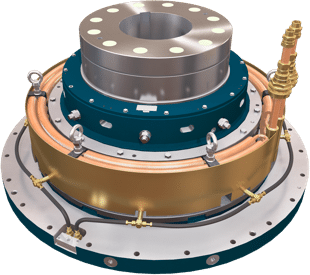 Vertical Bearings
Vertical Bearings
- AV Series
AV
LV SeriesLV
MV SeriesMV
V SeriesV
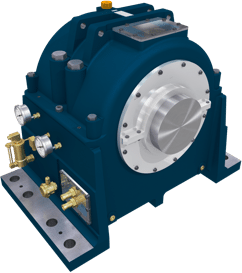 Horizontal Bearings
Horizontal Bearings
- HD Series
HD
IH SeriesIH
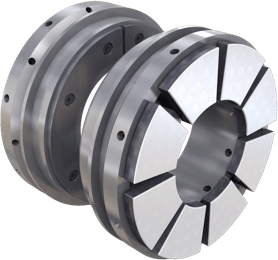 Tilting Pad Bearings
Tilting Pad Bearings
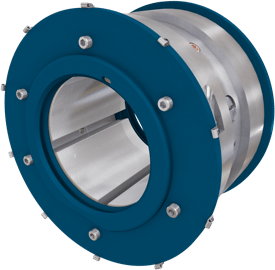 Journal Bearings
Journal Bearings
- Journal Pad Units
Journal
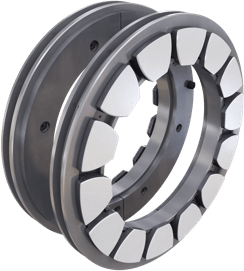 Thrust Bearings
Thrust Bearings
- SE Series
SE
Omega EqualisedOmega
OmegaOmega
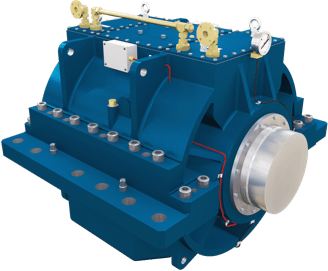 Marine Bearings
Marine Bearings
- Marine Gearbox Internals
Marine
Marine Propulsion Motor
and Generator BearingsEnter your email to download the full paper
"*" indicates required fields
Outline
Home > PTFE Faced Bearings; Thissavros – A Case StudyPTFE Faced Bearings; Thissavros – A Case Study
R T Knox, Michell Bearings, UK
Introduction
The Thissavros pumped storage power plant (3 x 128 MW), owned and operated by the Public Power Corporation, is a major hydroelectric installation on the Nestos river in northern Greece. Support for the weight of the rotating parts of the reversible vertical Francis pump-turbine units, as well as the hydraulic load, is provided by a combined thrust and journal bearing. During commissioning of the plant problems were encountered with the thrust bearings which were of a traditional whitemetal design. Heavy wiping of the pad surface occurred as a result of thrust runner deformation. As modification to the thrust runner was not an option a solution was sought which entailed only changes to the thrust pads.
In recent years PTFE faced thrust pads have emerged as an alternative to whitemetal. Originating in the hydro industry, they have many benefits among which are the ability to operate in adverse alignment conditions. Beginning with a description of PTFE faced thrust bearings the paper describes the bearing failures at Thissavros, and then details how PTFE faced thrust pads were used to overcome the problems of operation with the original deformed thrust runner.
Background
PTFE has been available as an engineering material for some time in a variety of forms, and is well associated with bearing technology. Its use, however, as a surface material for hydrodynamic bearings is relatively recent. Originating in Russia and China in the 1970’s for use in hydrogenerator power plant, its use is attracting much attention in other parts of the world.
The construction of a PTFE faced bearing is similar in many respects to that of a conventional bearing. Like its whitemetal counterpart the PTFE faced pad is generally sector shaped, relies on some form of pivoting mechanism at its rear surface to produce a convergent lubricating film, has sufficient thickness to support the resultant hydrodynamic loading, and uses oil as the working medium.
However it is the pad surface that differentiates the PTFE faced bearing from the more familiar whitemetal version. In the latter a relatively thin layer of the tin-based alloy is bonded metallurgically to the steel substrate of the pad, often in the case of older designs, with the addition of dovetail or rectangular retention grooves. The alloy surface is then machined to a flat or very slightly crowned profile. Leading edge chamfers or radii are added to help induce the hydrodynamic action at start up. In some cases a system to allow high-pressure oil injection between the working surfaces is added to assist start up under heavy loading. This applies typically at specific loads greater than 2.4 MPa (350 lbf/in2).
The PTFE faced pad, in contrast, has a relatively thick layer of a PTFE/wire mesh composite attached to the steel body of the pad instead of the whitemetal. The method of bonding the PTFE to the steel body using wire mesh as an intermediate material is key to the successful operation of the pad. Fig. 1 shows a cross section through part of a typical thrust pad. The wire provides not only the means of attachment, but also serves as a compliant layer, which allows expansion and contraction of the PTFE in operation. Note that the coefficient of linear expansion of PTFE is an order of magnitude greater than that of the supporting steel. Attachment of PTFE by adhesives, as is often done in some simple slide bearings used on bridge supports for example, would rapidly fail at the joint due to the differential expansion rates encountered at the sliding speeds and temperatures typical of hydrodynamic bearings.
What makes this type of bearing so attractive, however, are the significantly higher specific loadings that are possible (Ref. 1). The reasons for this lie in the thermal and frictional properties of PTFE which lead to a number of important benefits. Because PTFE has a higher melting point than conventional whitemetal, hydrodynamic bearings may comfortably be operated at higher temperatures and hence at higher pressures which means the bearing has a higher margin of safety against abnormal overloads, leading to an increase in machine reliability and availability. The exceptionally low coefficient of static friction for PTFE also means there is no need for high-pressure oil injection between surfaces to overcome the frictional effect of high loads at start up. The material is more tolerant than whitemetal, making it ideally suitable for difficult or arduous applications (Ref. 2).
These benefits attributable to PTFE faced thrust pads have been used to great effect in overcoming a particularly difficult problem at Thissavros
ACCESS FULL PAPERRecommended articles
Large Low Maintenance Horizontal Turbine Bearings – A Case Study From A Remote Installation in Africa
PTFE Faced Thrust Bearings – An OEM’s Viewpoint
Size-for-Size Comparisons of PTFE Faced Thrust Bearings in Two Applications with Correlation Against Analysis
The Development of a PTFE Faced Thrust Bearing for Dinorwig Pumped Storage Power Station
Michell Bearings
Waldridge Way,
Simonside East Industrial Park,
South Shields,
NE34 9PZ.Tel: +44 (0) 191 273 0291
Email: sales@michellbearings.com
Email: hrteam@britishengines.com
Email: recruitment@britishengines.com© Michell Bearings.
Registered Office Address: 11 Glasshouse Street, St Peter's, Newcastle upon Tyne. NE6 1BS. Company registered in England and Wales no. 9390648

 PTFE Bearings
PTFE Bearings